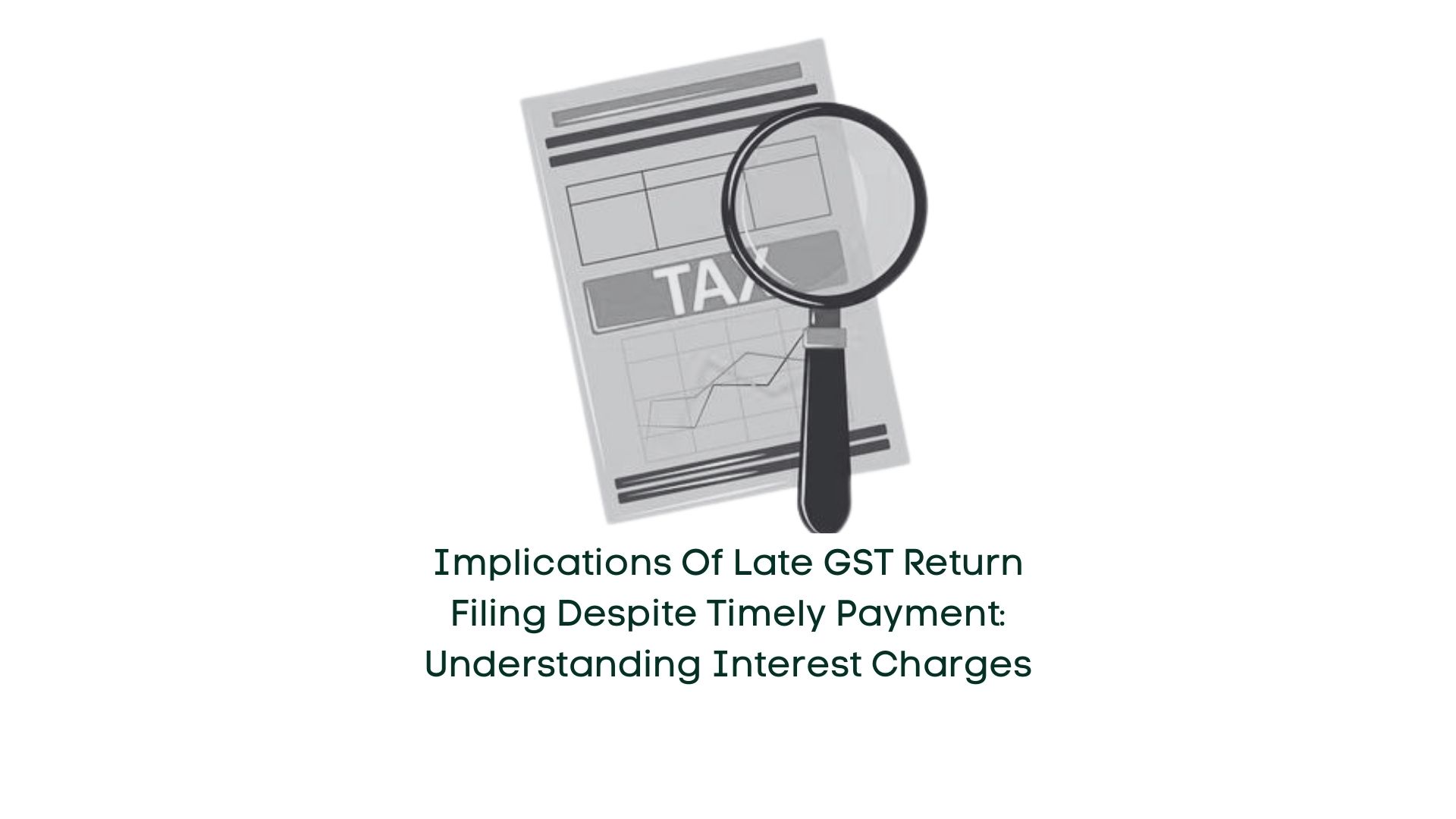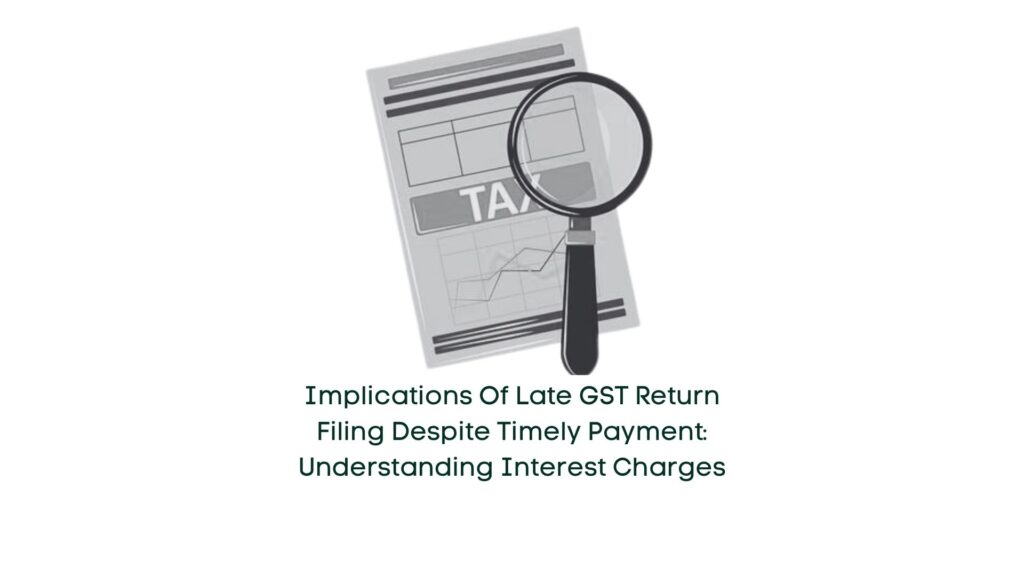
29 Feb Implications of Late GST Return Filing Despite Timely Payment: Understanding Interest Charges

Introduction:
In the landscape of GST implementation, a significant dilemma emerged concerning whether the payment process concludes solely upon clicking ‘Offset of liabilities’ or if GST payment is finalized upon depositing the tax amount in the Cash Ledger (CL). The early stages of the GST portal witnessed technical glitches, causing delays in return filings despite prompt payment into the cash ledger, leading to GST notices for interest recovery. The timing of tax payment holds critical importance in various scenarios, including the utilization of excess balance in CL to prevent interest/penalties on future liabilities, eligibility for credit on Reverse Charge Mechanism (RCM) transactions, delayed reflection of amounts in CL, among others.
Interest Implications:
Government departments initiated interest recovery proceedings for delayed GST return filings. However, in numerous instances, returns were filed late while the cash ledger was credited on time. Several compelling reasons argue against levying interest in such cases. It’s imperative to delve into the multifaceted aspects surrounding this issue.
Statutory Flow Analysis:
A fundamental understanding of the statutory flow governing how liabilities are registered and nullified under GST law is essential. According to Chapter IX of the CGST Rules 2017 coupled with Chapter X of the CGST Act 2017:
- Liabilities as per the filed return are debited in the Electronic Liability Register.
- Upon depositing the amount (payment made from a bank account) in CL, the amount is credited in CL.
- Upon offsetting the liability by filing the return, the amount is credited to the Electronic Liability Register and debited from the Electronic Cash/Credit ledger.
Understanding Fund Movement:
Notably, when funds are transferred from the assessee’s bank account to CL, the entry is flagged as ‘CREDIT’, indicating a liability on the government’s part. The subsequent ‘DEBIT’ entry upon offsetting the liability does not involve actual fund movement but signifies allocation. The significance of the Challan Identification Number (CIN) lies in marking successful credit to the government account, with actual fund movement occurring at this stage. Consequently, the deposition of funds in CL serves as a tangible payment entry. As per section 49, the date of credit to the government’s account is deemed the date of deposit in the electronic CL. Thus, when funds are available to the government, the assessee shouldn’t be deemed non-compliant.
Legal Provisions:
Moreover, according to section 27(2) and Rule 13, a casual taxable person’s tax liability is discharged by depositing the amount in CL, akin to advance tax payment. Section 53A mandates the government to transfer equivalent amounts when balances are switched between CLs, irrespective of return filings, emphasizing fund utilization upon CL deposition.
Interest Exemption:
Sections 77 of the CGST Act and section 19 of IGST highlight instances where interest is not levied for incorrect transactions, emphasizing that actual bank payment, not head allocation, constitutes payment.


No Comments